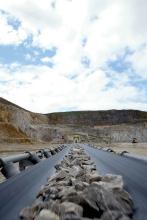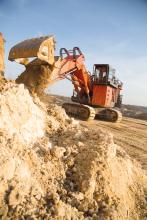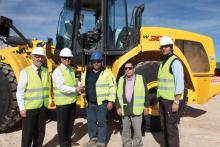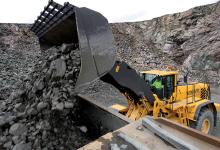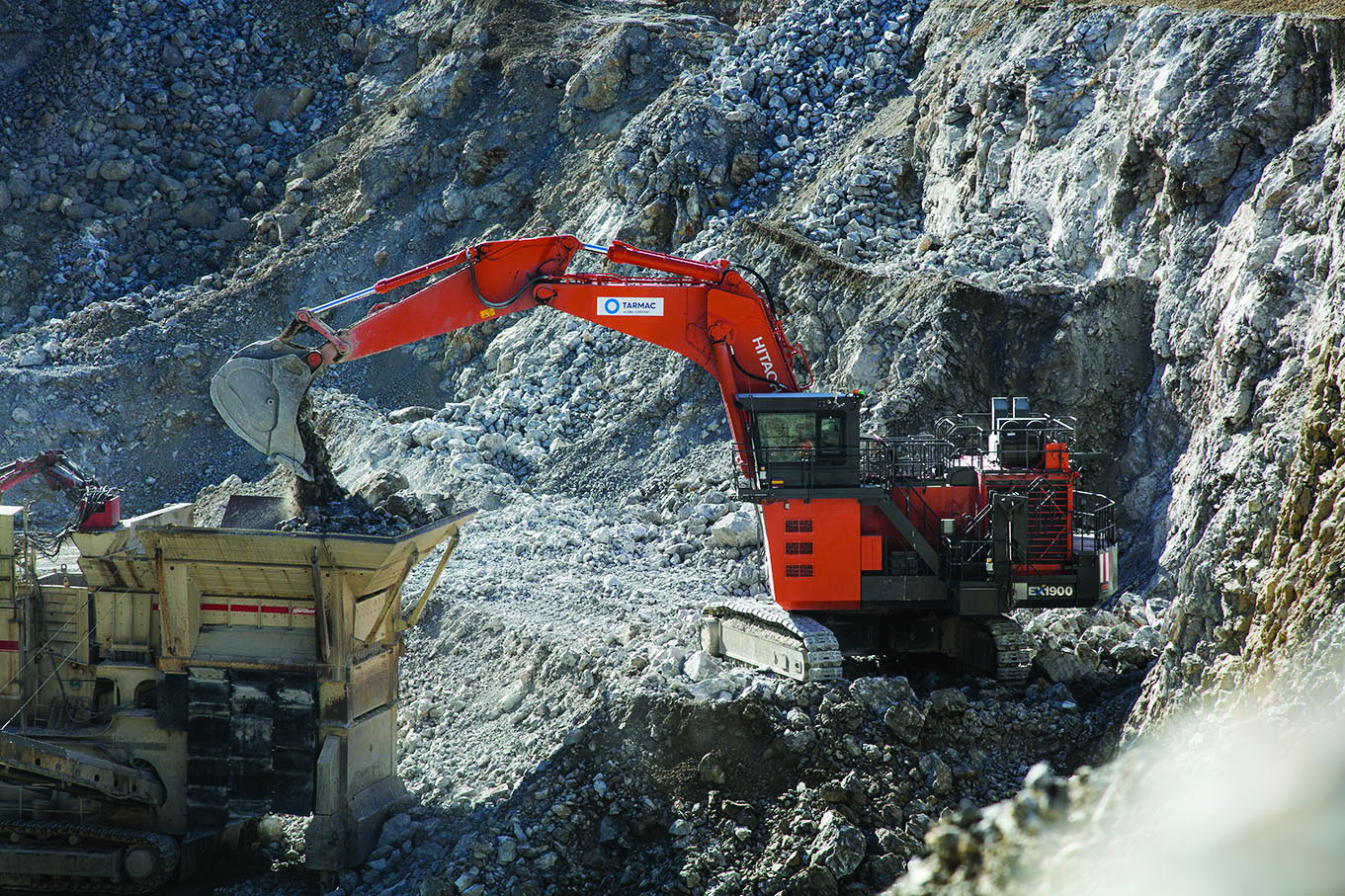
The site’s new primary mover is said to be helping to reduce operational hours at the site by increasing productivity and efficiency, and is used to load up to 1,200tonnes of carboniferous limestone/hour directly into a 200tonne mobile crusher.
A field conveyor takes the material to a secondary crusher at an average rate of 1,000tonnes/hour.
The Hitachi model was supplied with a longer boom and arm, and a smaller 8m³ bucket, than is customary on a machine of this size.
“This is because it needs a larger working range to reach the limestone and load the crusher,” says Mark Turnham, mines & quarries manager at Hitachi Construction Machinery (UK).
“It means the primary crusher doesn’t need to be moved as frequently, this can take 45 minutes, so it enhances the efficiency of the process.”
The ultra-large excavator was also supplied with Hitachi genuine ground engaging tools, which is said to further enhance productivity by improving penetration and overall digging power.
Swinden Quarry produces various sizes of aggregates, from 100mm down to dust (including grades of 80, 40, 28, 20, 14, 10 and 6), which are dry stored in silos. The material is either directly transferred to the site’s rail siding via a conveyor to the fully automated truck load-out, or into the ‘toast rack’ storage, from which a wheeled loader can directly load customers’ trucks.
Approximately 60% of the materials are transported by rail to Tarmac’s dry distribution centres in the city of Leeds, for onward transportation to county South Yorkshire, and a depot in the port of Hull. Much of the limestone is used in Tarmac’s concrete and asphalt plants in the north of England.
With the arrival of the EX1900-6, Tarmac intends to maintain its current production levels and annual output of 2.3 million tonnes.


